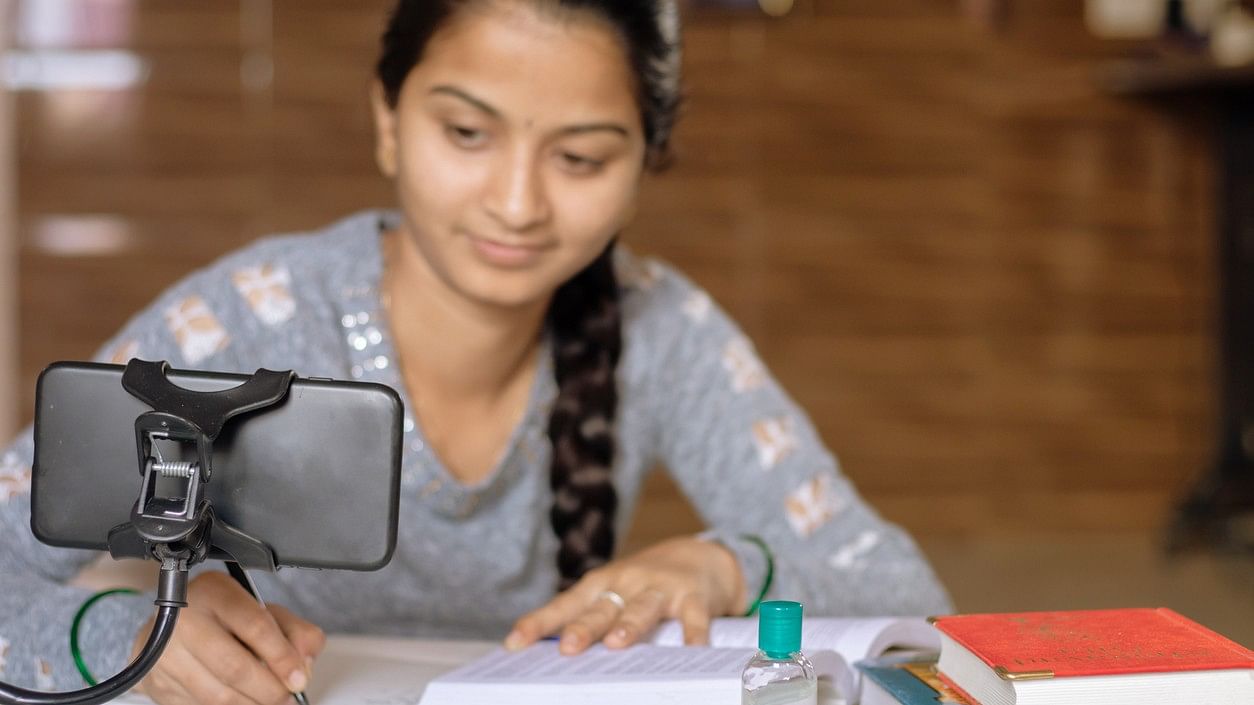
Representative image showing e-learning.
Credit: iStock Photo
Education is no exception in a landscape where technology continues to evolve and dictate every aspect of our routine lives. While Augmented Reality (AR) /Virtual Reality (VR)/ Mixed Reality (MR) have been dominating the gaming landscape for a prolonged period, these technologies have become the buzzwords in education in recent years, holistically transforming learning experiences.
From delivering immersive learning experiences that make education interactive, enhanced and nuanced, AR/VR/MR modes have been a game changer.
In an educational context, these leading-edge technologies have made learning exciting and visually stimulating, metamorphosing mundane tasks into interactive exploration experiences. However, it is critical for educators, parents and students to both- collectively and individually- navigate these innovative technologies and implement them in a way that seamlessly blends ingenuity, limitation and strategic use.
Critical thinking among children
AR/VR/MR learning modes bring real-world experiences into the education ecosystem. By allowing students to explore historical landmarks, scientific discoveries, and artistic creations in real-time, under enriched context, they help foster an ethos of critical thinking and innovation. These intuitive technologies have opened new avenues for learning, especially by breaking down complex content into simplified versions.
Despite the advantages delivered by AR/MR/VR modes, it’s pivotal to leverage their potential systematically, i.e. by setting up healthy boundaries. In tandem, parents must create a haven wherein children can report any discomfort they feel while exploring AR/VR/MR content. Lastly, getting hands-on with intuitive and interactive tools at a young age is much easier, making setting limitations and promoting real-life interaction experiences extremely important.
Teachers’ guidance and support
Educators are the catalyst for moulding young minds into sociocognitive adults, and with absolute certainty, AR/VR/MR have significantly helped make that process seamless. Departing from conventional learning curriculums, educators using the new-age tech arsenal have been able to design a structured learning course that prioritises diversification, real-time experience and personality development. By introducing teamwork-building projects, they have assisted educators in cultivating a collaborative learning environment.
Educators embedding AR/VR/MR technologies in the education model must take effective steps to deliver constant support and guidance to young children through every step of an interactive learning process. As educators, it is their core responsibility to filter out inappropriate content and ensure regular check-ins and monitoring to gain crucial insights into the quality of learning and the development progress of every student.
Parental supervision
From the first time a child holds onto their finger, parents are the beacon of enrichment, nurturing and abundant care in every child’s life. Every parent manifests the best for their children. As a result, they are increasingly leveraging AR/VR/MR tools to inculcate a well-rounded academic and professional quotient.
Since these tools are much more experiential, they tend to open space for interactions that may feel real, resulting in children getting addicted to a solely virtual world. Hence, it is critical to include proper supervision by ensuring the content is age-appropriate, educational and safe for young minds.
Cognizant of the potential risks, from health deficiency, social isolation, and safety concerns associated with progressive technology, parents need to educate their children about the risk factors attached to them, stimulating young minds to leverage it in a healthy, instructed and informed manner. Parents need to establish guidelines specifying usage time and breaks to prevent excessive exposure and encourage children to engage in experiences outside the four walls of these technologies.
Thus, the strategic implementation of AR/VR/MR modes lies in fostering a balanced approach, assimilating virtual experiences with real-world activities to encourage holistic development.
Embracing these state-of-the-art technologies has opened the gateway to immersive learning experiences, inculcating students with a rich spectrum of skills and knowledge for the future. Parents, children and teachers must come forward as a united force, ensuring that technology serves educational objectives, promotes healthy habits, and nurtures lifelong learners.
By taking thoughtful steps in implementing these technologies, we can pave the way for a dynamic learning ecosystem beyond the classroom walls to turn learning into an enriching voyage of exploration.
(The author is the CEO and Founder of a preschool chain)